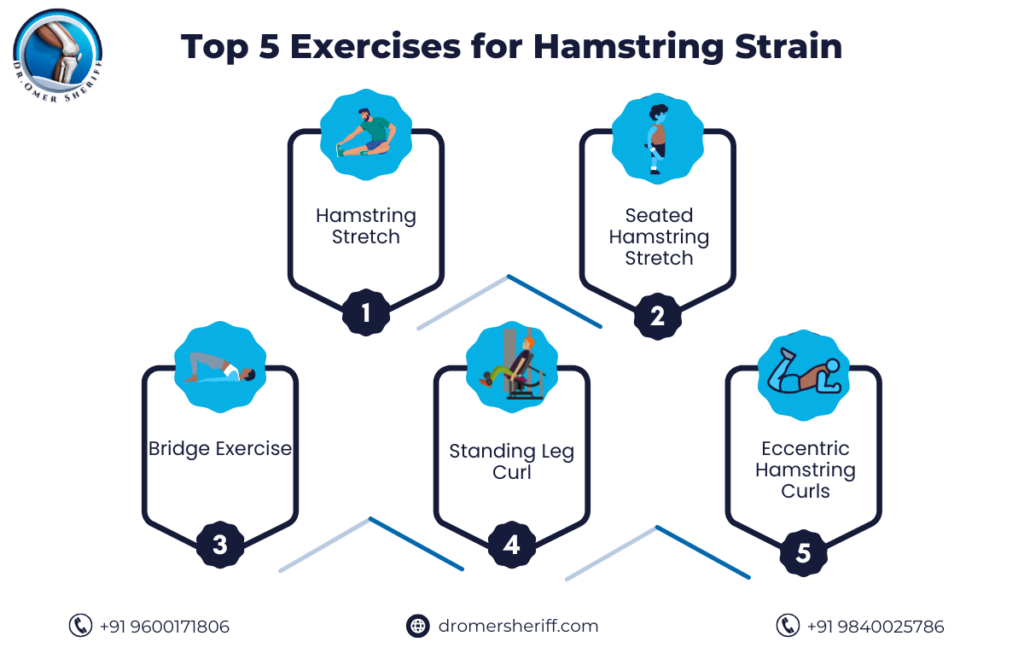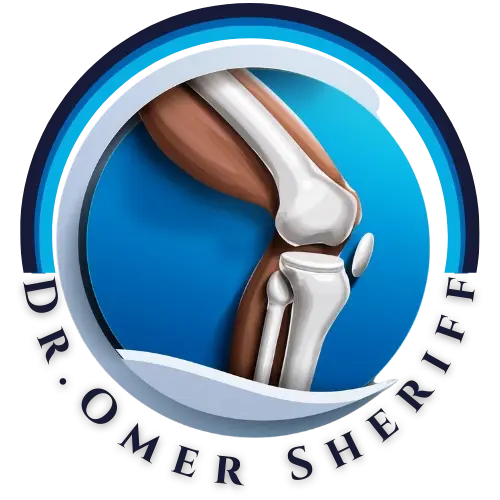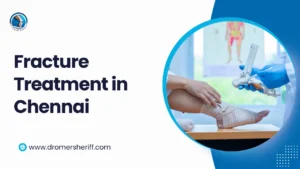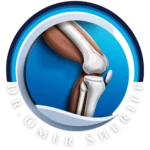Hamstring injuries are common among athletes and even everyday individuals. Whether caused by sudden movement, overstretching, or muscle fatigue, hamstring strains can sideline you for weeks. But did you know that targeted exercises for hamstring strain are key to speeding up recovery and preventing future injuries? This blog will explore what causes hamstring strains, their symptoms, and the most effective exercises to rehabilitate your injury and regain your strength.
By integrating physical therapy for hamstring injuries into your rehabilitation plan, you can not only recover faster but also reduce the risk of future injuries. Read on for a detailed guide on the best exercises for hamstring strain recovery.
Understanding Hamstring Strains
Hamstring strains are a common injury, particularly in athletes and active individuals. They occur when one or more of the muscles that make up the hamstring group are overstretched or torn. The hamstrings, located at the back of the thigh, play a crucial role in movements like walking, running, and jumping. Understanding the severity of hamstring strains, their causes, and how to manage them is key to ensuring a smooth and successful recovery.
What Are Hamstring Strains?
A hamstring strain is a tear or stretching of the muscles at the back of your thigh. It is often caused by sudden movements, such as sprinting or overstretching. Depending on the severity of the tear, hamstring injuries can range from mild to severe.
A hamstring strain refers to an injury to the hamstring muscles composed of three muscles: the biceps femoris, semitendinosus, and semimembranosus. These muscles run from the hip to the knee and are responsible for flexing the knee and extending the hip. When these muscles are forcibly stretched beyond their capacity, it can result in a strain, which may range from mild overstretching to a partial or complete tear.

Grades of Hamstring Strains
Hamstring strains are classified into three different grades, depending on the severity of the injury:
- Grade 1 (Mild): This involves a minor strain or overstretching of the hamstring without significant tearing. Symptoms include mild discomfort, stiffness, and tightness in the back of the thigh, but typically no loss of strength or significant movement restrictions.
- Grade 2 (Moderate): A partial tear of the hamstring fibers occurs in this grade. Symptoms include more pronounced pain, swelling, and possibly bruising. There may be a loss of strength, and walking or running becomes more difficult.
- Grade 3 (Severe): A full rupture of the hamstring muscles is categorized as a Grade 3 strain. This is the most serious type and is characterized by intense pain, severe swelling, bruising, and a complete inability to bear weight on the affected leg. Surgical intervention may be required for full recovery in these cases.
What Causes a Hamstring Strain?
Hamstring strains happen when one or more of the muscles at the back of your thigh get overstretched or torn. These injuries are usually caused by sudden movements such as sprinting, jumping, or overstretching, especially if the muscle is not properly warmed up. Individuals who have weak or tight hamstrings, or those who suddenly increase the intensity of their activities, are at a higher risk of straining their hamstrings.
Common Causes of Hamstring Strains
Hamstring strains are often the result of overuse or sudden excessive force placed on the muscles. Some common causes include:
- Rapid acceleration or deceleration movements: Sprinting or changing direction quickly can place a large strain on the hamstrings, leading to injury.
- Inadequate warm-up: Failing to properly stretch or warm up before physical activity can leave the hamstrings tight and more prone to injury.
- Muscle imbalances: Weakness in the hamstrings compared to the quadriceps (muscles on the front of the thigh) can increase the likelihood of a strain.
- Fatigue: Tired muscles are less able to absorb energy, increasing the risk of a tear during high-intensity activities.
- Previous injury: If you’ve had a hamstring injury before, you’re more likely to suffer another one.
Symptoms of a Hamstring Strain
The symptoms of a hamstring strain can vary depending on the severity. You may experience pain in the back of your thigh, swelling, bruising, and difficulty walking or straightening your leg. In more severe cases, you might even hear a “popping” sound at the time of injury. It’s crucial to address these symptoms early with exercises for hamstring strain to avoid worsening the condition.
The symptoms of a hamstring strain can vary based on the severity of the injury. However, common symptoms include:
- Sudden pain: Typically felt at the back of the thigh, especially when engaging in activities that involve sprinting, jumping, or stretching.
- Swelling and bruising: In more severe strains, you may notice swelling or discoloration in the back of the thigh shortly after the injury.
- Muscle weakness: You might experience a loss of strength in the injured leg, making it difficult to walk or perform physical tasks.
- Stiffness and reduced mobility: Stiffness in the affected area can limit the range of motion, especially when trying to extend or bend the leg.
Hamstring Strengthening Exercises for Recovery
Building strength in the hamstring muscles is crucial for hamstring pull recovery and long-term stability. These exercises, often recommended during physical therapy for hamstring injury, focus on gradual strengthening to promote healing and prevent reinjury:
1. Isometric Hamstring Contractions
- How to Perform:
- Sit on a chair with your injured leg bent at 90 degrees.
- Press your heel into the ground while maintaining the knee bend.
- Hold for 5–10 seconds, then relax.
- Benefits: Activates the hamstring without overstraining, making it ideal for the early stages of physical therapy for pulled hamstring.
2. Hamstring Curls
- How to Perform:
- Lie face down on the floor or a mat.
- Slowly bend your knee, bringing your heel toward your buttocks.
- Lower your leg back to the starting position.
- Perform 2–3 sets of 10–15 repetitions.
- Tip: Add light ankle weights as strength improves.
- Benefits: Gradual strengthening of the hamstring helps regain muscle function and enhances overall recovery during hamstring pull recovery.
3. Bridge Lifts
- How to Perform:
- Lie on your back with your knees bent and feet flat on the ground.
- Raise your hips toward the ceiling, squeezing your glutes and hamstrings.
- Lower back down slowly.
- Perform 2–3 sets of 12–15 repetitions.
- Benefits: Improves hamstring and glute coordination, essential for functional strength during physical therapy for pulled hamstring.
4. Romanian Deadlifts (Using Light Weights)
- How to Perform:
- Stand with a slight bend in your knees and hold light weights.
- Hinge at your hips, lowering the weights toward the ground while keeping your back straight.
- Return to a standing position.
- Benefits: Strengthens the hamstrings and enhances flexibility through controlled motion, a vital part of physical therapy for hamstring injury.
Stretching Exercises for Hamstring Recovery
Stretching is essential for regaining flexibility and preventing scar tissue buildup during hamstring pull recovery. These stretching exercises are a staple in physical therapy for hamstring injury:
1. Seated Hamstring Stretch
- How to Perform:
- Sit on the floor with your injured leg extended and the other leg bent.
- Reach toward your toes with both hands, keeping your back straight.
- Hold the stretch for 20–30 seconds.
- Benefits: Relieves tightness and improves range of motion, accelerating hamstring pull recovery.
2. Standing Hamstring Stretch
- How to Perform:
- Stand upright and place your injured leg on a low surface, like a step or a chair.
- Keep your leg straight and hinge forward at the hips.
- Hold for 20–30 seconds and repeat on the other leg.
- Benefits: Targets the hamstring muscles effectively without overstraining, making it ideal for physical therapy for pulled hamstring.
3. Dynamic Leg Swings
- How to Perform:
- Stand next to a wall for support.
- Swing your leg forward and backward in a controlled motion.
- Perform 10–15 swings per leg.
- Benefits: Promotes blood flow and loosens the hamstring, especially during warm-ups in physical therapy for hamstring injury.
4. Foam Rolling for Hamstrings
- How to Perform:
- Sit on the floor with a foam roller under your hamstring.
- Slowly roll back and forth, applying gentle pressure to tight areas.
- Spend 1–2 minutes on each leg.
- Benefits: Relieves muscle tension and enhances the benefits of physical therapy for hamstring injury.
Treatment Options for Hamstring Strains
Treating a hamstring strain depends on the severity of the injury, but most cases respond well to conservative measures such as rest, ice, compression, and elevation (RICE). For more serious injuries, additional treatments might include:
- Physical Therapy for Hamstring Injury: Physical therapy plays a critical role in the rehabilitation of a hamstring strain, focusing on restoring strength, flexibility, and range of motion. Techniques such as stretching, strengthening exercises, and massage therapy are employed by physical therapists to aid recovery and prevent future injuries.
- Medication: Over-the-counter pain relievers, such as ibuprofen or acetaminophen, can help reduce pain and inflammation in the early stages of recovery.
- Hamstring Pull Recovery Exercises: Specific exercises are recommended during different stages of recovery. Initially, gentle stretching exercises help restore flexibility, while strengthening exercises are introduced later to rebuild muscle strength and improve functional mobility.
- Surgery: In the case of a complete hamstring tear, surgery may be necessary to reattach the muscle to the bone, followed by an extensive rehabilitation period to ensure proper healing.
Why Rehabilitation Exercises Are Crucial
Recovering from a hamstring injury isn’t just about resting. If you don’t properly rehabilitate the muscle, you could be at risk of reinjury or prolonged recovery times. Rehabilitation exercises for hamstring strain are designed to gradually rebuild strength, flexibility, and endurance in the affected muscles. These exercises also help realign muscle fibers, reduce scar tissue formation, and promote better healing.
The time it takes to recover from a exercises for hamstring strain depends largely on the injury’s severity. Here’s a general breakdown:
- Grade 1 (Mild strain): Recovery may take anywhere from a few days to three weeks. Light stretching and strengthening exercises can typically begin within a few days after the injury.
- Grade 2 (Moderate strain): Recovery time is usually between four to eight weeks, with physical therapy for pulled hamstring being a vital part of the process to ensure the hamstring heals properly.
- Grade 3 (Severe strain): Full recovery from a severe hamstring strain or tear can take three to six months, and surgical intervention may be required, followed by extensive rehabilitation.
Role of Physical Therapy for Hamstring Injury
Physical therapy plays a vital role in your recovery. A licensed physical therapist can guide you through tailored rehabilitation exercises, monitor your progress, and adjust the program as you heal. Physical therapy for hamstring injury often includes a combination of stretching, strengthening, and range-of-motion exercises that are crucial to regaining full function.
Stages of Recovery in Hamstring Pull
Hamstring recovery usually occurs in three stages:
- Acute Stage: Focus on rest, icing, and avoiding any movements that could worsen the strain.
- Subacute Stage: This is when you begin gentle exercises, such as isometric contractions, to start rebuilding muscle strength.
- Remodeling Stage: During this stage, exercises become more dynamic, focusing on stretching and strengthening to support long-term recovery.
Essential Exercises for Hamstring Strain Recovery
- Isometric Hamstring Contractions: In the early stages of rehabilitation, it’s important to start with isometric hamstring contractions. These exercises involve tightening your hamstring without moving the joint. They help to prevent muscle atrophy and maintain some level of strength while protecting the injured area.
- Gentle Stretching for Flexibility: As you progress, gentle stretching is essential to improve flexibility. Be careful not to overstretch, as this could worsen the injury. Start with seated hamstring stretches or towel stretches, making sure to hold each stretch for about 20–30 seconds without bouncing.
- Strengthening Exercises for Hamstring Strain: Once you’re ready to start rebuilding strength, exercises like standing leg curls and bridging can help strengthen your hamstring without overstressing it. Begin with bodyweight exercises, then gradually add resistance bands or light weights as your strength improves.
- Core and Lower Body Strengthening: Strengthening your core and lower body muscles, such as your glutes and quadriceps, is vital in preventing future exercises for hamstring strain. Exercises like squats, lunges, and planks target the muscles that support your hamstring, offering better overall stability and reducing the strain on your hamstrings during physical activity.
- The Importance of Warm-Up and Cool-Down: Never underestimate the importance of a proper warm-up and cool-down routine. Warming up before any physical activity prepares your muscles for the movements ahead, while cooling down afterward helps reduce stiffness and promotes recovery. Incorporating dynamic stretches and light aerobic activity into your warm-up and cool-down routine can protect you from future hamstring injuries.
Hamstring Pull Recovery Tips
- Avoiding Reinjury After a Pulled Hamstring: Reinjury is one of the most common risks after a hamstring pull. It’s important to avoid jumping back into intense activities too soon. Make sure you’ve regained full range of motion and strength in your hamstrings before returning to sports or strenuous exercises.
- When to Seek Medical Attention: If you notice that your hamstring isn’t improving after a few weeks of exercises for a hamstring strain, or if the pain worsens, it might be time to consult a healthcare professional. Dr. Omer Sheriff can evaluate your condition and develop a personalized recovery plan, including advanced physical therapy for pulled hamstrings.
Preventing Future Hamstring Strains
Preventing hamstring strains involves taking a proactive approach to both training and recovery. Here are a few strategies:
- Regular stretching: Incorporating hamstring stretches into your warm-up routine can improve flexibility and reduce the risk of injury.
- Strengthening exercises: Strengthening not only the hamstrings but also the surrounding muscle groups, like the quadriceps and glutes, can help maintain a balanced musculature, reducing the likelihood of injury.
- Warm-up and cool-down: Always engage in a proper warm-up before intense physical activity and cool down afterward to prevent muscle tightness and strain.
- Gradual progression: Avoid jumping into high-intensity exercises too quickly. Gradually increasing the intensity and duration of your workouts can help prevent muscle fatigue and overuse injuries.
Conclusion
Exercises for hamstring strain are an integral part of the recovery process. Whether you’re in the early stages of healing or working to regain your strength, following a structured rehabilitation plan will speed up your recovery and help prevent re-injury. If you need more guidance or have concerns about your hamstring injury, don’t hesitate to reach out to Dr. Omer Sheriff for professional advice and treatment options. Take the next step in your recovery by contacting us today.






